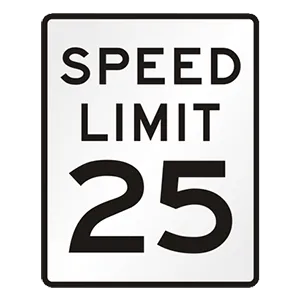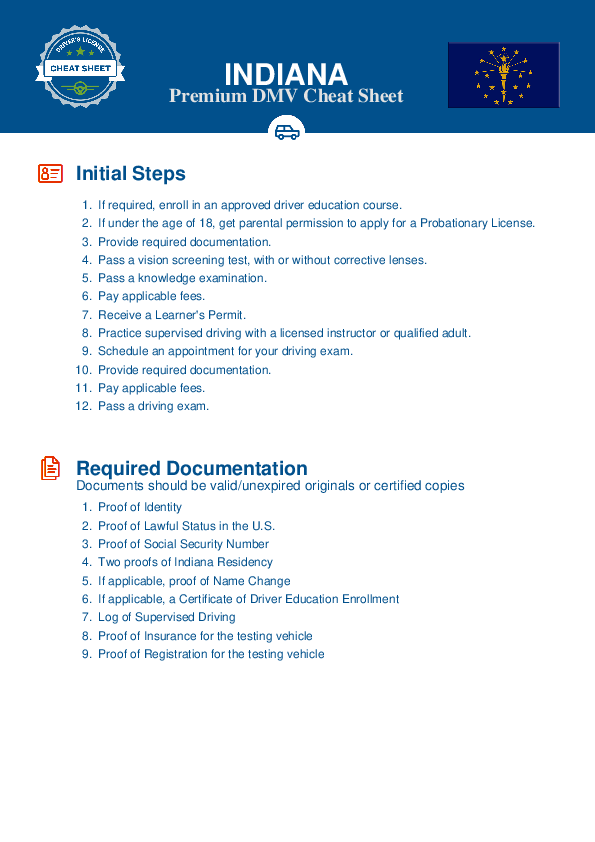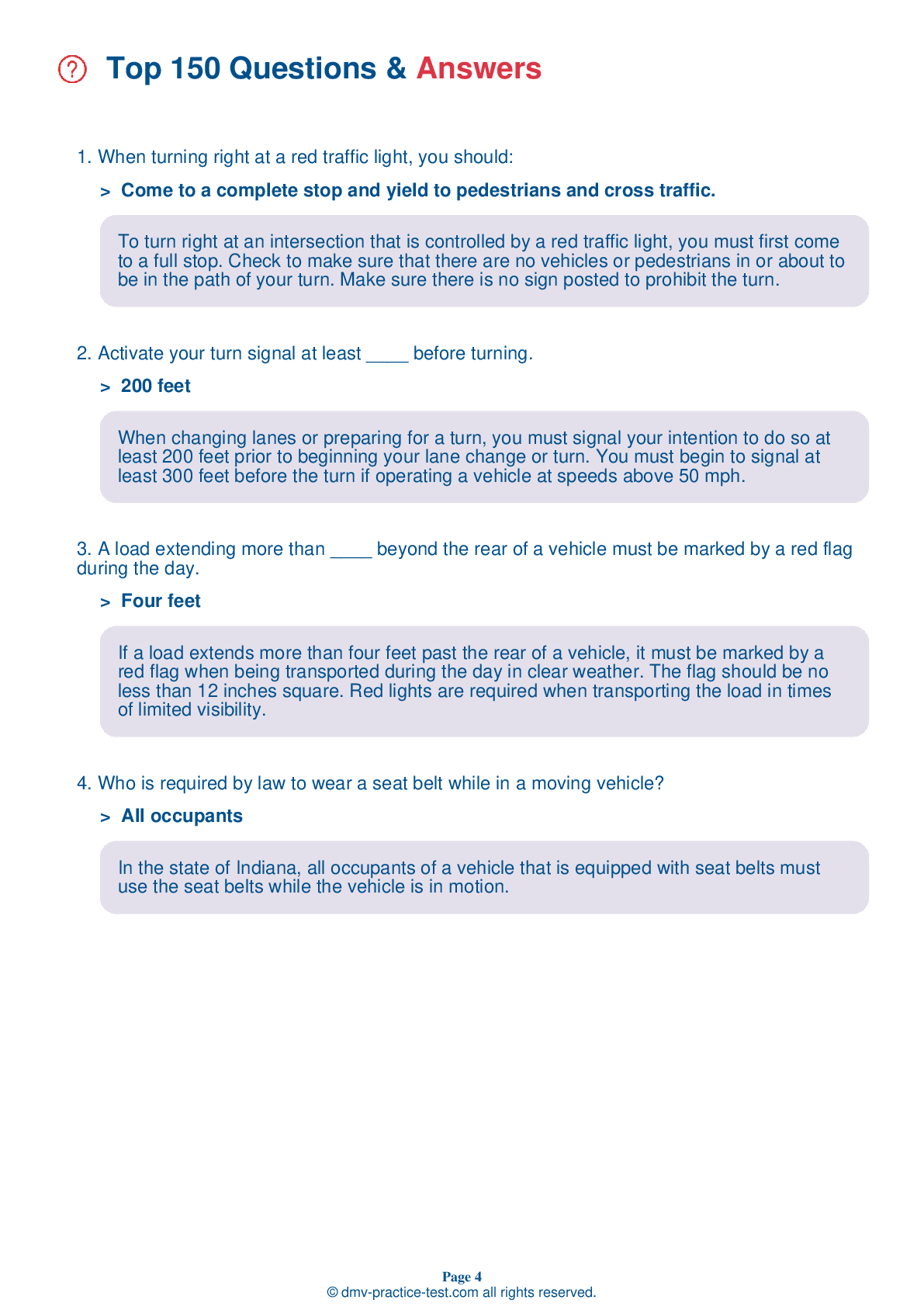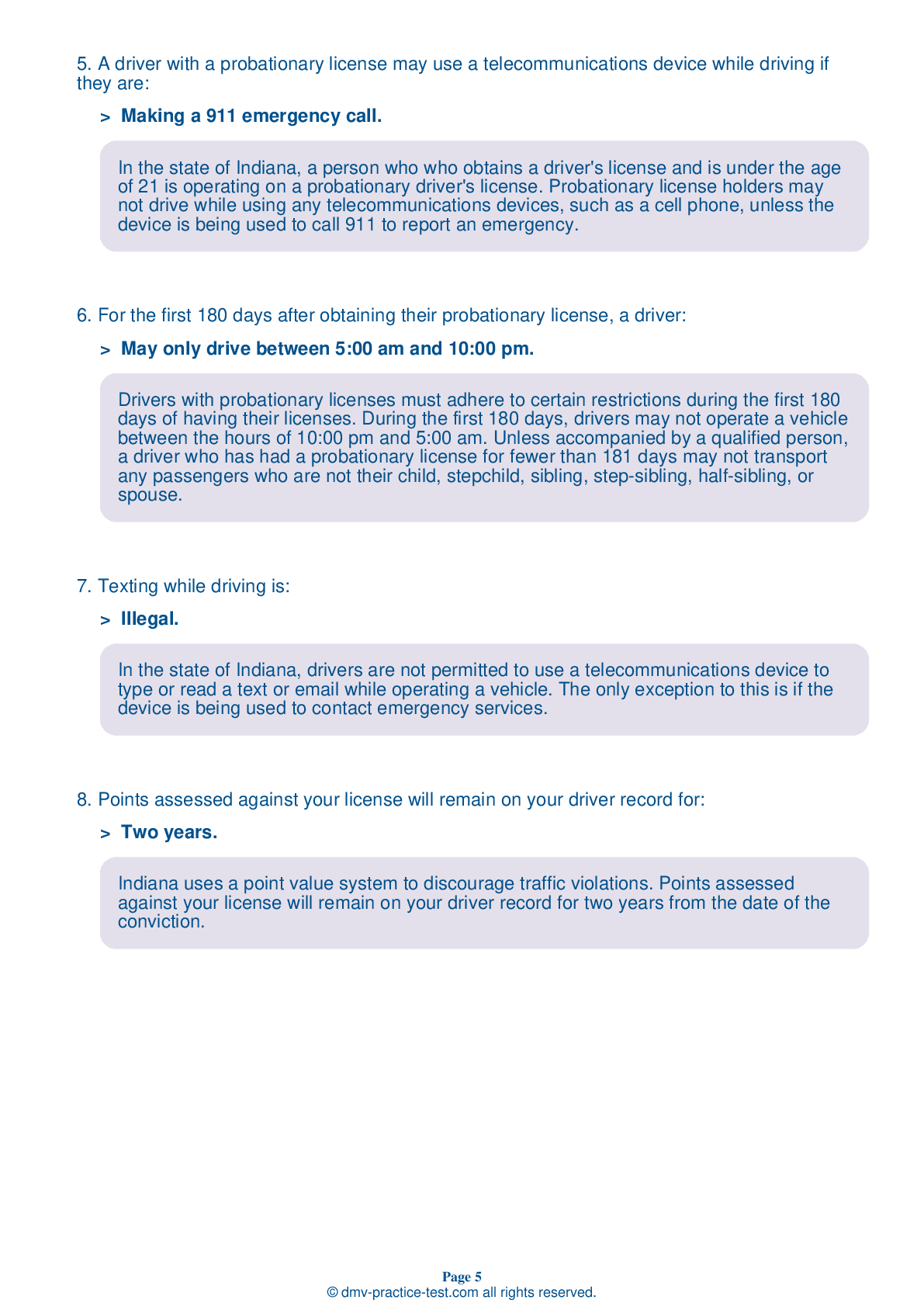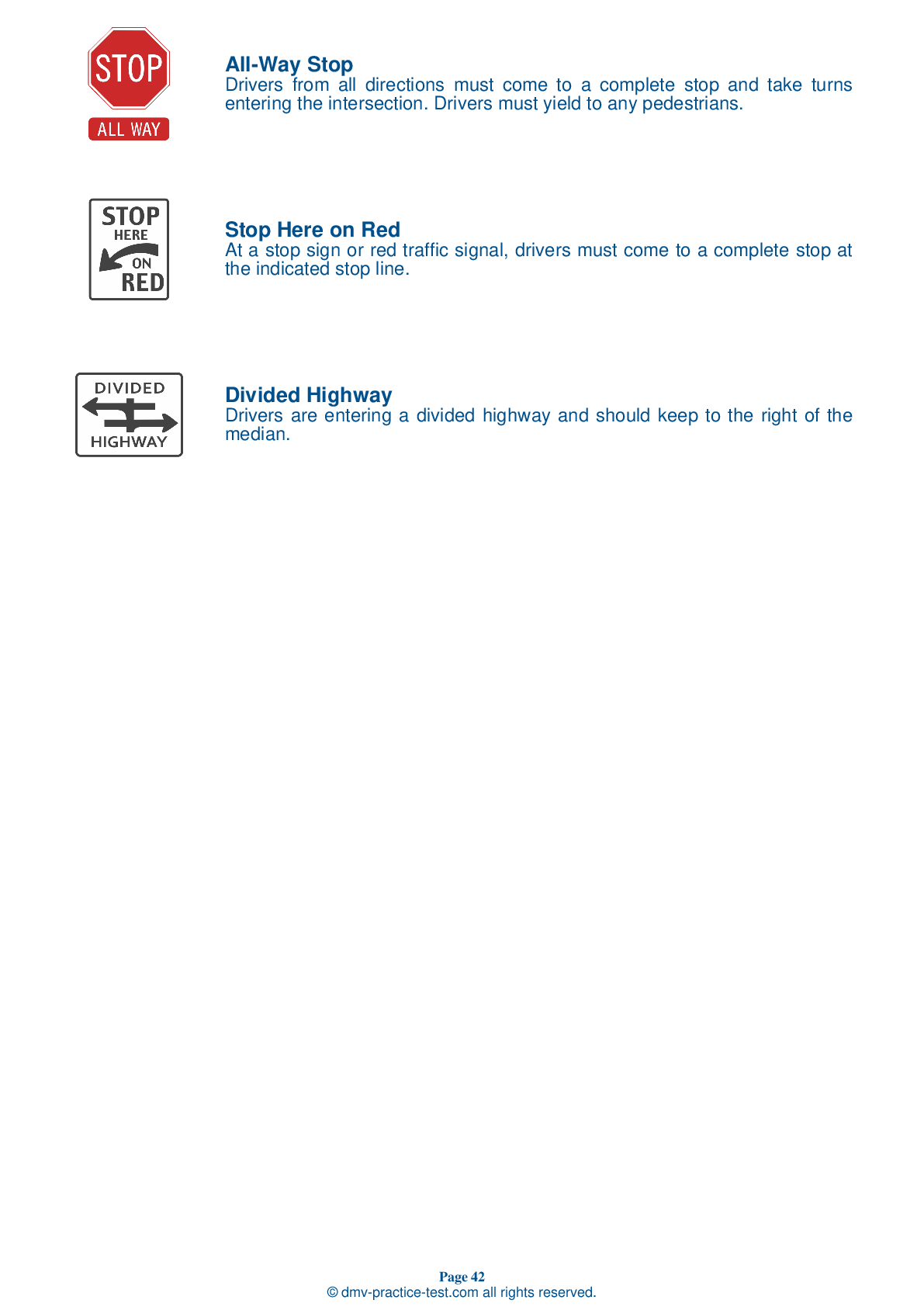FREE Indiana DMV Practice Test #19 Page 4 of 5
This set of Indiana DMV practise tests has been updated for January 2025. It includes questions based on the Indiana Driver Handbook's most significant traffic signals and laws for 2025. Use actual questions that are very similar (often identical!) to the DMV driving permit test and driver's licence exam to study for the DMV driving permit test and driver's licence exam.
On the practise exam, each question gets a tip and explanation to help you remember the concepts. The written component of the official Indiana DMV test will include questions about traffic rules, traffic signs, and driving statutes, as well as information from the Driver Handbook.
To obtain a passing grade, you must correctly answer 44 of the 50 questions. Take our DMV practise exam to help you prepare for your Indiana instruction permit or driver's licence.
The DMV exam is available in several languages.
Using any kind of testing assistance will result in an automatic fail, and the DMV may take additional action against your driver's licence, so stay away from it.
28 . If an oncoming driver is heading toward you in your lane, you should:
If another vehicle is approaching you head-on in your lane, you should first honk your horn to attract attention. If the other driver does not move over, try to escape to the right. If you swerve left and the other driver corrects at the last instant, you will still crash. If a collision is unavoidable, brake firmly and steadily. Every mile per hour you slow down will reduce the impact.
29 . The “No zone” is:
A truck or bus has blind spots on each side, in the rear, and in the front. An automobile cannot be seen in these blind spots. These blind spots are referred to as the “No zone.”
30 . Traffic signs and pavement markings:
Traffic flow is controlled by pavement markings, traffic islands, signals, and signs. These devices inform drivers of conditions on the roadway and help guide drivers safely to their destinations. You must always obey traffic signs, signals, and pavement markings.
31 . What does a flashing yellow traffic light mean?
A flashing yellow traffic light indicates that you should drive with caution.
32 . You must not drive your vehicle at a speed greater than:
You must not drive at a speed that is faster than is reasonable and prudent. You must drive at a speed that is appropriate for the area where you are driving, the type and condition of surrounding traffic, the presence of pedestrians, the weather, the quality of the road, and light conditions. You must drive within legal speed limits.
33 . This sign means:
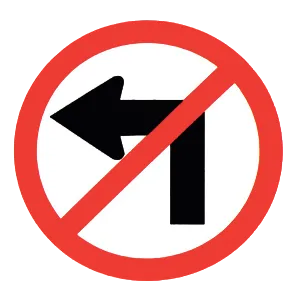
This sign indicates that left turns are prohibited.
34 . You are coming to an intersection and have a green light. Pedestrians are crossing against the red. You should:
Yield to pedestrians and cars that may be caught in an intersection when you have a green light. Be careful around pedestrians under every circumstance.
35 . The posted speed limit shows:
